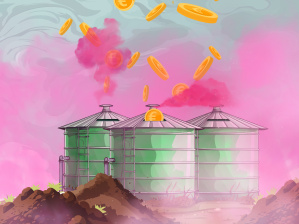Biogas Policies in the EU: Levelling up or locking in?

Summary
A policy and financial analysis The European Union is the global leader in biogas production, with a production volume of 22.8 billion m3 in 2024. Most biogas is derived from the anaerobic digestion (AD) of organic materials such as energy crops, agricultural and food waste, and manure. Methane captured from landfills and sewage sludge also counts as biogas. Biogas is used for generating heat and power and is further upgraded into biomethane, which is comparable to fossil gas. Biomethane is injected into existing fossil gas grids – for use in households and businesses – and is used as transport fuel (as BioLNG).
This report, commissioned by the Methane Matters Coalition, examines the current status of the biogas industry in the European Union (with specific attention to member states Denmark, Germany, Ireland, the Netherlands, Poland, and Romania) and in the United Kingdom. The report analyses the market developments in the EU as a whole and in the seven countries; the environmental impacts of biogas production; the regulatory frameworks applicable; the level at which regulations cover environmental impacts; public financing schemes for biogas; and bank and investor financing for a selection of biogas companies.
You might also like...

Stranded in a vicious cycle? The case for transformation in animal agriculture
The production of meat and dairy is a significant source of carbon and methane emissions, but at the same time also uniquely dependant on stable climate conditions. In this briefing, we present a survey from...

The Meat Agenda: Agricultural Exceptionalism and Greenwash in Brazil
As Brazil prepares to host the 30th conference of the parties of UNFCCC (COP30) in heart of the Amazon, the country is positioning itself as a global climate leader with ambitious emissions reduction targets...
